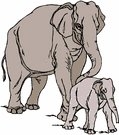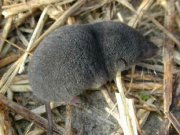
Worksheets and No Prep Teaching Resources
Reading Comprehension Worksheets
Animal Themes
Grasslands

Animal Themes
 Worksheets and No Prep Teaching Resources Reading Comprehension Worksheets Animal Themes Grasslands |
 Animal Themes |
| edHelper's suggested reading level: | grades 3 to 5 | |
| Flesch-Kincaid grade level: | 3.77 |
|
Shrews
By Vickie Chao |

|
 1 Shrews are small and cute. But they are also very aggressive! From the moment they wake up, they scurry around looking for things to eat. They eat nuts and seeds. They eat worms and insects. And, at times, they even eat other shrews! To them, size is a trivial concern. Large or small, it does not matter. The only thing they care about is if they can get a hold of it and devour it!
1 Shrews are small and cute. But they are also very aggressive! From the moment they wake up, they scurry around looking for things to eat. They eat nuts and seeds. They eat worms and insects. And, at times, they even eat other shrews! To them, size is a trivial concern. Large or small, it does not matter. The only thing they care about is if they can get a hold of it and devour it! |
Create Weekly Reading Books
Prepare for an entire week at once! |
| Leave your feedback on Shrews (use this link if you found an error in the story) |
 |
Animal Themes
|
 |
Grasslands
|
|
|